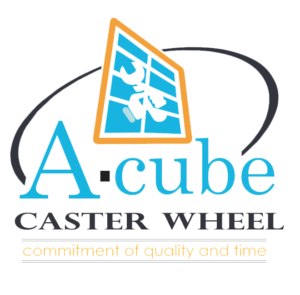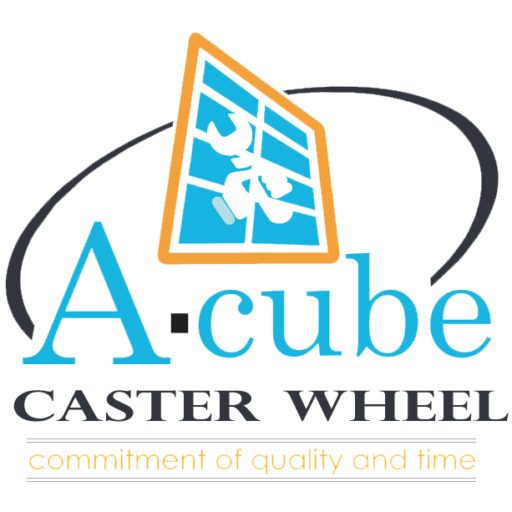Support
Keep good relationship with our existing customers is our core concern, A-CUBE continual improve to make cost down and develop innovative technology to ensure win-win outcomes for all.
At the same time, A-CUBE search cooperation opportunities with new customer, especial for small customers, A-CUBE will help small clients to grow up by way of ODM and maintain a reasonable price, we seek the trust of its customers rather than for the pursuit of narrow, short-term interests, if they became very competitive in their local area, we can get BIG order accordingly, that is just what we insist to do and we’re doing.
All Indian casters factories face enormous competitive pressures under this new normal situation, we are very aware of our differences and we are clear-headed about our place and role in today’s casters supply chain. We believe A-CUBE and our partners will be fine as long as we stick to the mentioned WIN-WIN rules.
Before the buyer receive the castor products, they must have been finished a series of testing to attain the using standard. For example: bincaster wheel testing(En840), rectilinear motion test, circular power test, salt spary test(AASS)/(NSS), brake function test, Rockwell hardness test, caster impact test and so on.
Production Process
The castor production has a lot of steps before testing. On the one side, we are focus on material, like PU, PP, PA, TPR, stainless steel and so on. On the other side, we are concentrate more on QTY. And we built up a professional production & sales team to provide our clients with more and more high quality castor.
How to Select the Right Casters
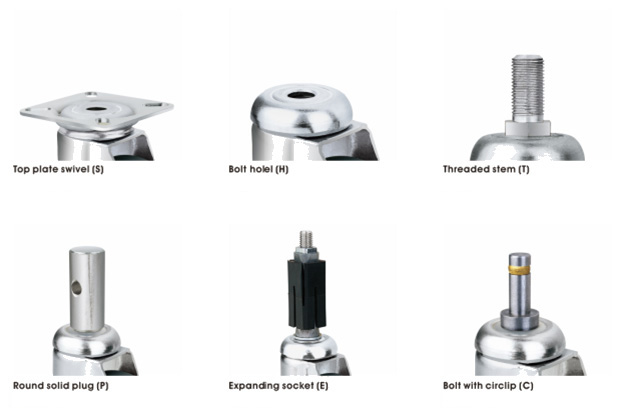
- According to the usage environment
- When choosing an appropriate wheel carrier, the first thing to take into consideration is the wheel caster’s bearing weight. For example, in supermarkets, schools, hospitals, office buildings and hotels, the floor is good, smooth and goods carted around are usually light, meaning that every caster will carry roughly 10 to 140kg. Therefore, a suitable option is a plating wheel carrier formed using a stamping process on a thin steel plate (2-4mm). This type of wheel carrier is light, flexible, and silent.
- In places such as factories and warehouses where cargo movement is more frequent and the load is heavier (280-420kg), we recommend using a wheel carrier made of a 5-6mm thick steel plate.
- If used for carrying more heavy objects such as those commonly found in textile factories, automobile factories, or machinery factories, due to the large load and long walking distance, each caster should be capable of carrying 350-1200kg, and be manufactured using an 8-12mm thick steel plate wheel carrier. The movable wheel carrier uses a plane ball bearing, and the ball bearing is mounted on the bottom plate, allowing the caster to bear the heavy load while still maintaining a flexible rotation and impact resistance. We recommend using caster wheels made of imported reinforced nylon (PA6) super polyurethane or rubber. Based on specific application needs, it can also be galvanized or sprayed with a corrosion resistance treatment, as well as given a winding prevention design.
- Special environments: cold and high temperature locations place a great deal of stress on the casters, and at extreme temperatures, we recommend the following materials
· low temperatures under -45℃: polyurethane
· high temperatures close to or above 230℃: special heat resistant swivel casters
- According to the bearing capacity
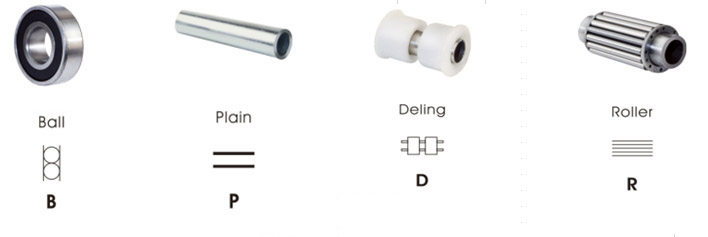
During the selection of the bearing capacity of the casters, users need to take into account specific safety margins. We use the most commonly used four wheel casters as an example, though choices should be made based on two methods
3. casters bearing all weight: One of the casters should be suspended. This method is suitable for applications where the casters bear a greater momentum over poor ground conditions while moving goods or equipment, especially in larger, heavier total weight amounts.
4. casters bearing a total weight of 120%: This method is suitable for ground conditions that are good, and the impact on the casters is relatively small during the movement of goods or equipment.
5. Calculate the carrying capacity: in order to calculate the load capacity needed by the casters, it is necessary to know the deadweight of delivery equipment, maximum load and the number of caster wheels and casters used. The load capacity required for a caster wheel or caster is calculated as follows:
T= (E+Z)/M×N
—T= the loading weight required for a caster wheel or caster
—E= deadweight of delivery equipment
—Z= maximum load
—M= the number of caster wheels and casters used
—N= Safety factor (about 1.3 – 1.5).
Attention should be paid to the cases where the casters will be exposed to a significant amount of impact. Not only should a caster with a large load bearing capacity be chosen, but specially designed impact protection structures should also be chosen. If a brake is needed, casters with single or double brakes should be selected.
How to Select the Right Wheel
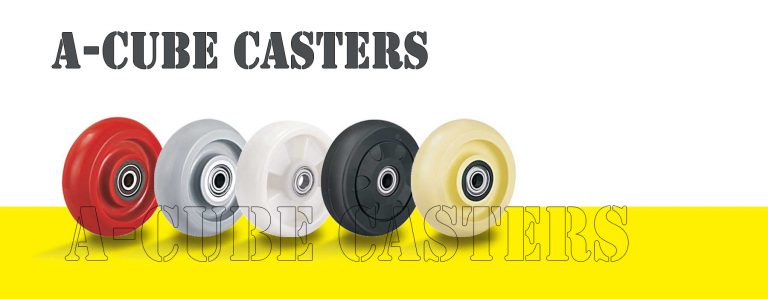
There are numerous caster wheel types for industrial casters, and all come in an array of sizes, types, tire surfaces and more based on different environment and application requirements. The following is a short explanation on how to choose the right wheel for your needs.
- Determine the wheel diameter
we usually determine the wheel diameter according to the bearing weight and installation height requirements. It is easier to push and the load capacity is larger when the wheel diameter is bigger, which also protects the ground from damage. - Choose the wheel material
The first thing to consider is the size of the pathway the wheel will be used on, obstacles that may be in the way (such as scrap iron, oil or other items), environmental conditions (such as high temperature, normal temperature or low temperature) and the weight the wheel can load. Once these three things have been taken into consideration, users can choose a suitable wheel material.
Nylon wheels or cast iron wheels feature a great wear resistance that makes them ideal for use on rough ground or areas with residual substances.
On a smooth, obstacle free and clean ground, rubber wheels, polyurethane wheels, pneumatic wheels or synthetic rubber wheels should be selected, all of which feature a mute performance and an excellent elasticity.
When working at special high temperatures or low temperatures, or the work environment temperature differences are significant, users should choose metal or other high temperature resistant materials for the wheels.
In places where static electricity is prevalent and needs to be avoided, it is better to use special anti-static wheels or metal wheels (if the ground does not require protection).
When there is a large amount of corrosive medium in the working environment, wheels with an excellent corrosion resistance and stainless steel wheel carriers should be selected accordingly.
Pneumatic wheels are also suitable for light loads and uneven and soft road surfaces.
About Caster Accessories
- Dual brake: a brake device that can lock the steering and fix the rotation of wheels.
- Side brake: a brake device installed on the wheel shaft sleeve or tire surface, which is controlled by foot and fix the rotation of wheels only.
- Direction locking: a device that can lock the steering bearing or turntable by using an anti-spring bolt. It locks the movable caster into a fixed position, which turns one wheel into a multi-purpose wheel.
- Dust ring: it is installed on the bracket turntable up and down to avoid dust getting on to the steering bearings, which maintains the lubrication and flexibility of the wheel rotation.
- Dust cover: it is installed at the ends of the wheel or shaft sleeve to avoid dust from getting onto the caster wheels, which maintains the wheel lubrication and rotation flexibility.
- Anti-wrapping cover: it is installed at the ends of the wheel or shaft sleeve and on the bracket fork feet to avoid other materials such as thin wires, ropes and other sundry winding in the gap between the bracket and wheels, which can keep the flexibility and free rotation of the wheels.
- Support frame: it is installed in the bottom of the transport equipment, ensuring the equipment remains in a fixed position.
- Other: including steering arm, lever, anti-loose pad and other parts for specific purposes.
Caster Wheel Materials
Caster wheels involve numerous different material types, with the most common being nylon, polypropylene, polyurethane, rubber and cast iron.
- Polypropylene Wheel Swivel Caster (PP Wheel)
- Polypropylene is thermoplastic material known for its shock resistance, corrosion resistance, friction resistance, and its non-marking, non-staining, and non-toxic performance, as well as a material that is odorless and will not absorb moisture. Polypropylene can resist many corrosive substances, with the exclusion of strong oxidizers and halogen hydrogen compounds. The applicable temperature range is between -20℃ and +60℃, though the bearing capacity will decrease in ambient temperatures of more than +30℃.
- Nylon Wheel Swivel Caster
- Nylon is a thermoplastic material that is known for its corrosion and friction resistance, odorless and non-toxic structure, and its non-marking and non-staining performance. Nylon can resist numerous corrosive substances, however, it will not be resistant to chlorine hydrogen compounds or heavy metal salt solutions. Its applicable temperature range is between -45℃ and +130℃, making it applicable for short term use in high temperature environments. It should be noted however, that at ambient temperatures higher than +35℃, the bearing capacity will decrease.
- Polyurethane Wheel Swivel Caster
- Polyurethane (TPU) is a member of the thermoplastic polyurethane family. It protects the ground, and will absorb vibrations with a non-marking, non-staining process. TPU features an excellent friction and corrosion resistance, as well as an outstanding elasticity, making it suitable for use in numerous environment types. Customers can choose the colors of the polyurethane to match required uses, with an applicable temperature range between -45℃ and +90℃, though it should be noted that the bearing capacity decreases at ambient temperatures of higher than +35℃. The hardness is generally 92°±3°, 94°±3° or 98°±2° Shore A.
- Casting Polyurethane (CPU) Elastomer Wheel Swivel Caster
- Casting polyurethane elastomer (CPU) is a thermosetting polyurethane elastomer formed using a chemical reaction process. Wheels made using this material protect the ground, and have an excellent abrasion resistance, corrosion resistance and UC radiation resistance, as well as an outstanding elasticity. However, it should be noted that this material is not resistant to hot water, steam, wet, humid air or aromatic solvents. The applicable temperature range is between -30℃ and +70℃, with short periods at up to +90℃ for a short time. The rigidity of casting polyurethane elastomer is the best at an ambient temperature of below -10℃ and the hardness is 75°+5° Shore A.
- Casting Polyurethane (CPU) Wheel Swivel Caster
- Casting polyurethane (CPU) is a thermosetting polyurethane elastomer formed using a chemical reaction. It is particularly suitable for applications that reach a maximum speed of 16km/h, and customers can choose the colors based on their requirements. The application temperature ranges between -45℃ and +90℃, with short term usage reaching all the way to +90℃.
- Casting Nylon (MC) Wheel Swivel Caster
- Casting nylon (MC) is a thermosetting plastic formed using a chemical reaction, and is often better than injection nylon. It features a natural color and has a very low rolling resistance. The applicable temperature range of casting nylon is between -45℃ and +130℃, though it is worth noting that the bearing capacity will decrease at temperatures above +35℃.
- Foam Polyurethane (PUE) Wheel Caster
- Foam polyurethane (PUE), also known as microcellular polyurethane, features a great buffering effect when it is used in high strength and pressure applications, a property which is not normally available in plastic or rubber materials.
- Solid Rubber Tire
- The wheel surface of solid rubber tires is formed by wrapping high quality rubber around the outer rim of the wheel core, then exposing it to high temperature solid vulcanization processes. Solid rubber tires feature an outstanding shock absorption and impact resistance, excellent elasticity, as well as a great ground protection and erosion resistance. Our solid rubber tire color choices include black, grey or dark grey, with an applicable temperature range of -45℃ and +90℃ and a hardness of 80°+5°/-10° Shore A.
- Pneumatic Wheel Caster
- Pneumatic wheel casters include pneumatic tires and rubber tires, both of which are made using rubber. They protect the ground, and are especially suitable for poor ground conditions. The applicable temperature range is -30℃ and +50℃.
- Soft Rubber Wheel Caster
- Soft rubber wheel casters protect the ground, and are especially useful in bad ground conditions. The applicable temperature range is -30℃ and +80℃ with a hardness of 50°+5° Shore A.
- Synthetic Rubber Wheel Caster
- Synthetic rubber wheel casters are made of thermoplastic rubber elastomers (TPR), which has an excellent cushioning and shock absorption performance, the better to protect equipment, goods and the floor. Its performance is better than that of a cast iron core rubber wheel, and is ideal for ground environments where there is gravel or metal filings. The applicable temperature range is -45℃ and +60℃ with a hardness of 70°±3° Shore A.
- Antistatic Synthetic Rubber Wheel Caster
- Antistatic synthetic rubber wheel caster is made of thermoplastic rubber elastomer (TPE), and features a static resistant performance. The applicable temperature range is between -45℃ and +60℃ with a hardness of 70°±3° Shore A.
- Cast Iron Wheel Caster
- Cast iron wheel casters are a caster wheel made specifically of a rugged grey cast iron with a high bearing capacity. The applicable temperature range is between -45℃ and +500℃ with a hardness of 190-230HB.
